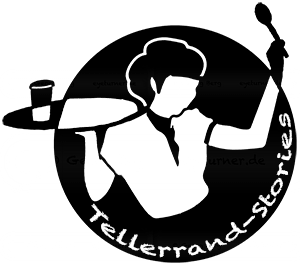In Germany, comics are often regarded as children’s stuff with speech bubbles. Things are different in France. There, the Bande Dessinée = comic strip (literally “drawn band”) enjoys the status of an art form that stands between literature and fine art. The French refer to it as Neuvième Art, the Ninth Art. After architecture, sculpture, painting, music, poetry, theatre, cinema and photography, comics occupy ninth place in the canon of the arts. This categorisation, which originated in the 1960s, is more than just a term: it reflects a conviction. In France, comics are not just children’s reading material. They can be found in bookshops alongside novels, are reviewed in newspapers like exhibitions and analysed in schools like poems.
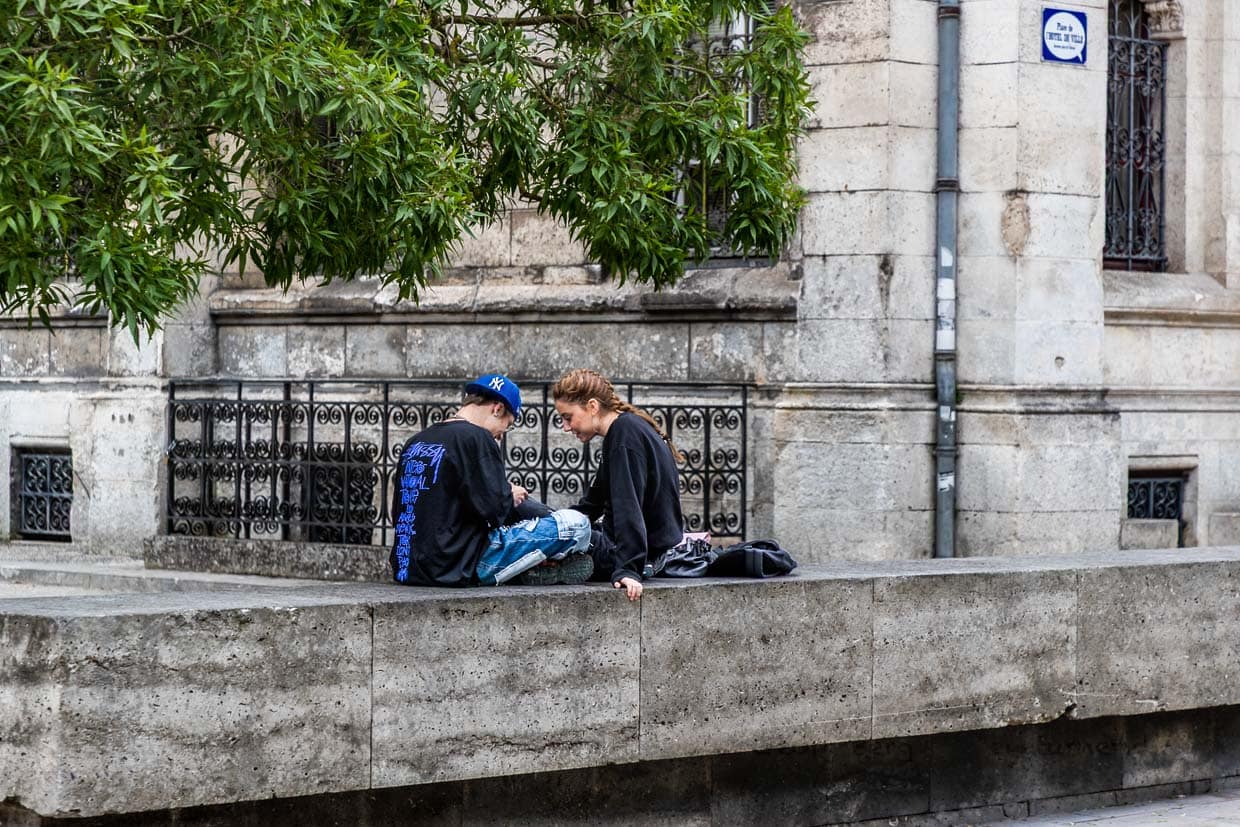
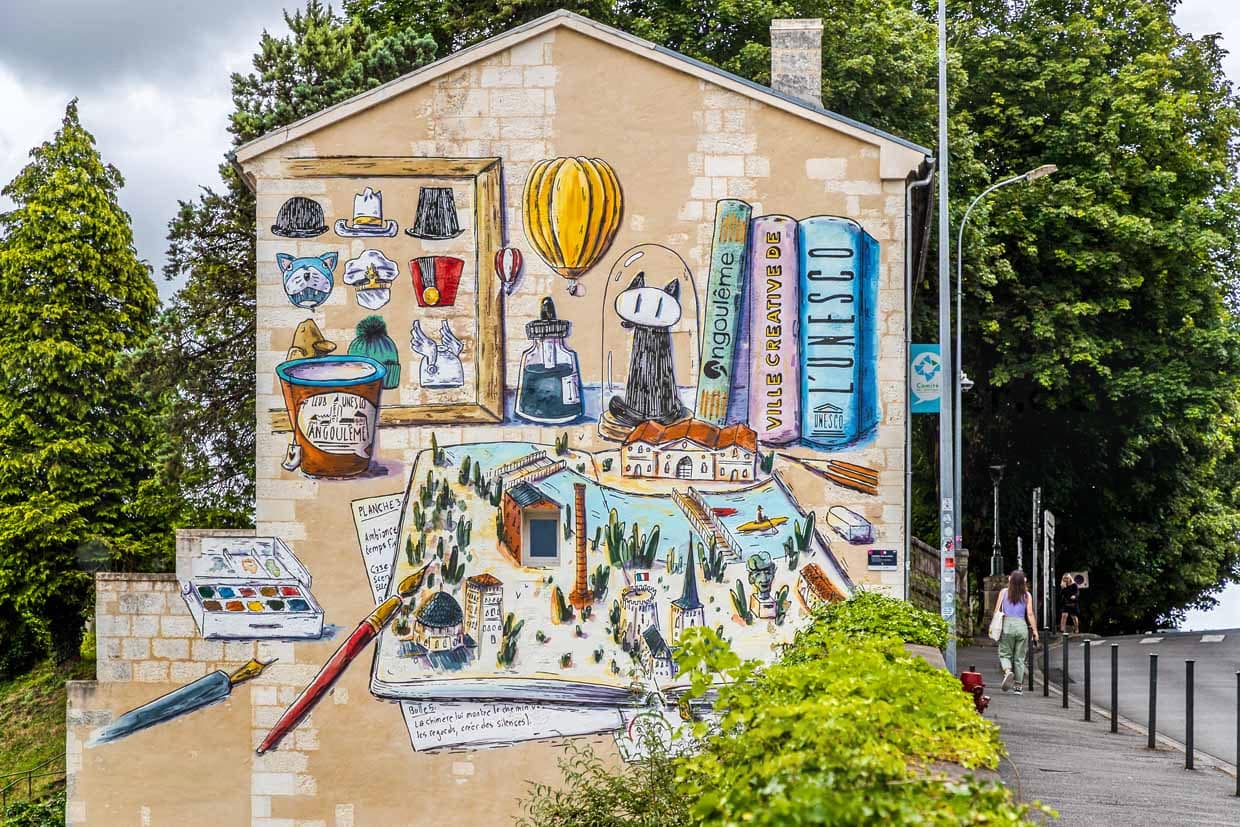
Angoulême, the capital of the Département Charente with 42,000 inhabitants, has made its love of the Bande Dessinée its identity. What began in the 1970s with a small comic festival is now a UNESCO cultural heritage site. In 2009, UNESCO awarded Angoulême the title of “Creative City of Literature” – a distinction that also recognises the link between comics and urban development.
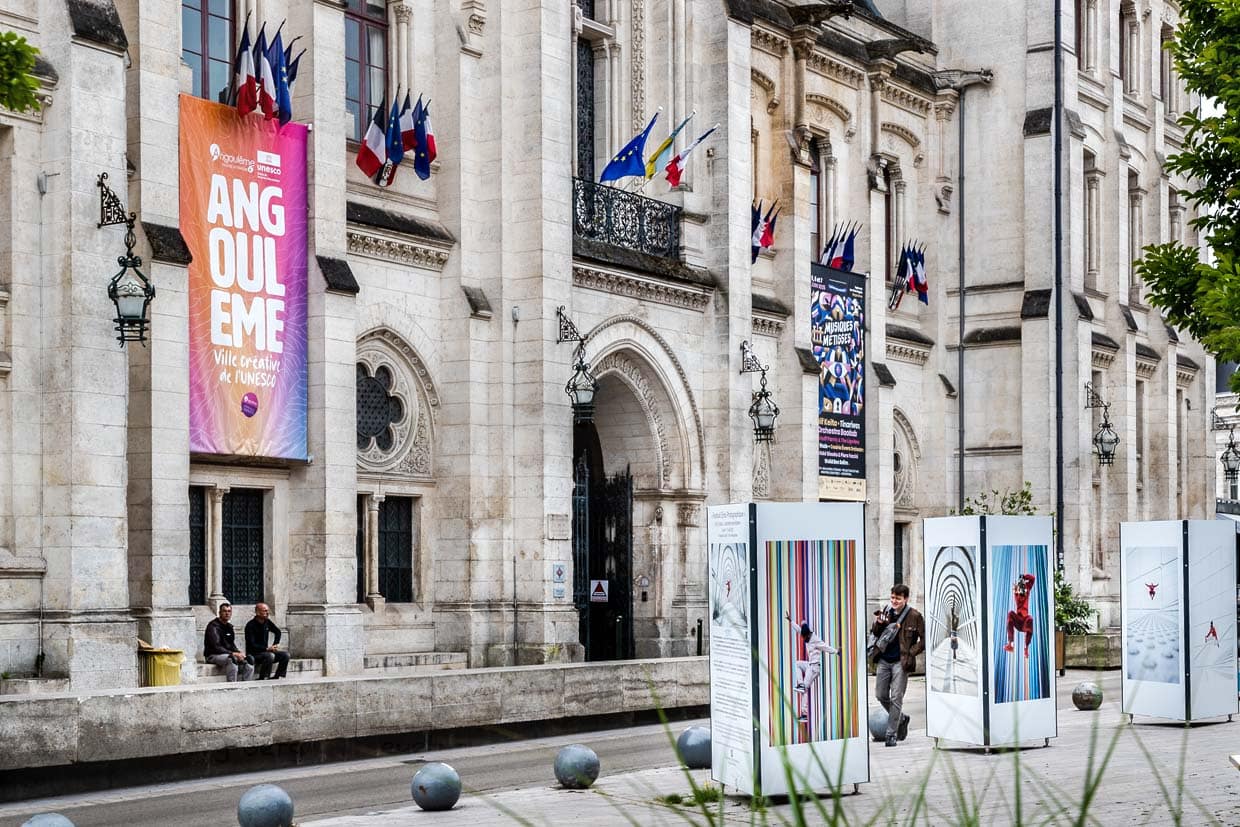
However, the history of this passion does not begin in the streets, but on the outskirts of the city – and it goes back further than many people realise.
Zig, Puce and Alfred the penguin
Anyone travelling to Angoulême today can easily overlook a relief on the side of the road: two boys and a penguin. They are Zig and Puce with Alfred, their faithful companion – characters that have influenced the French comic scene since 1925. Zig et Puce by Alain Saint-Ogan was revolutionary. Saint-Ogan introduced clear lines, speech bubbles and continuous narrative structures – stylistic devices that are taken for granted today. His mixture of humour, adventure and technology set new standards. It is no coincidence that these pioneers of French comics greet visitors even before they enter the city. It is a statement: this is where the realm of the ninth art begins. In 1974, Alfred the penguin became the mascot of the International Comic Festival in Angoulême. The festival prize still bears his name today.
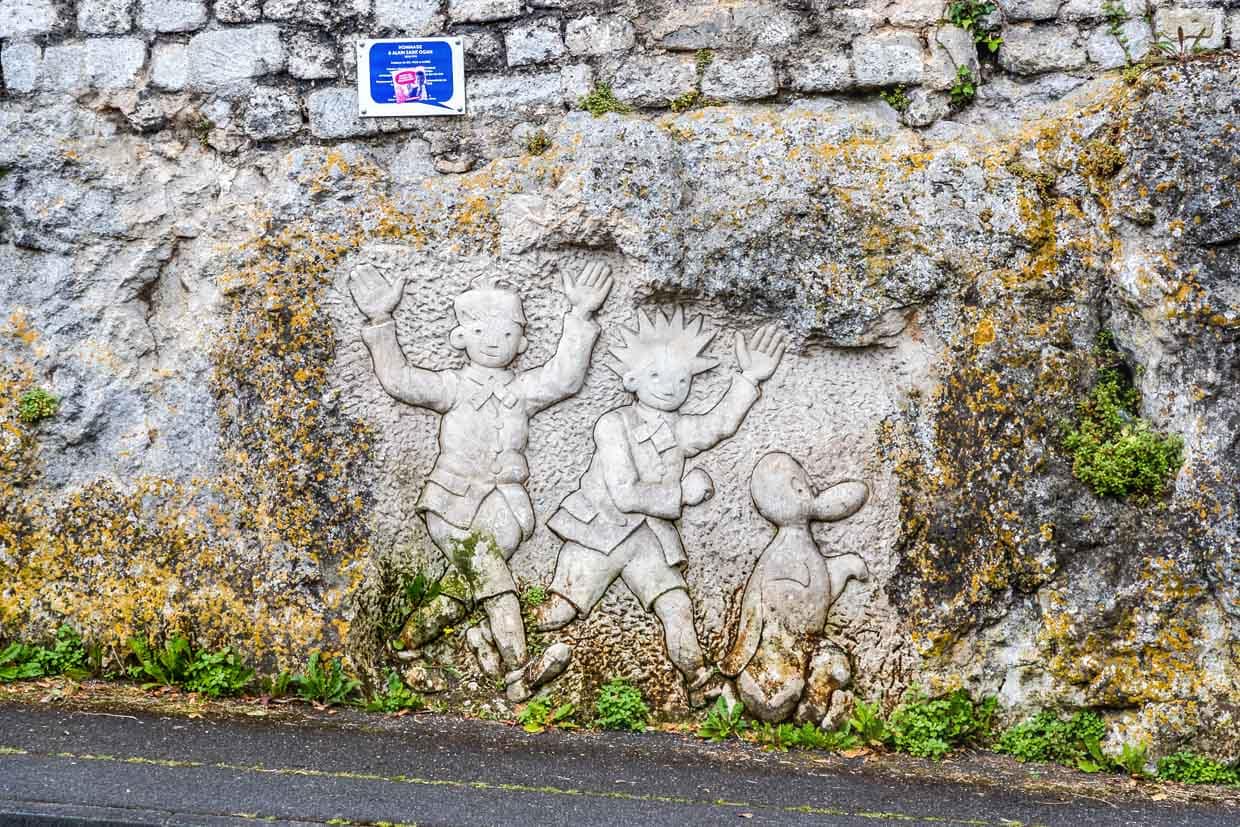
An anecdote from the early days illustrates the improvised start: the first festival was organised at such short notice that the organisers didn’t know until the very end whether enough publishers and artists would come. In the end, they all came – and stayed. Today, the Festival d’Angoulême is one of the most important events in the industry alongside the Comic-Con in San Diego and the Frankfurt Book Fair.
Asterix and Obelix
Angoulême honours two of its most important creators with large murals. René Goscinny, who was born in Paris in 1926 and died far too early in 1977, was the ingenious lyricist behind the most successful French comics of the 20th century. Together with Albert Uderzo, who died in 2020 at the age of 92, he proved that comic strips could be world literature.

The monumental mural The world of René Goscinny, created by Moon & Catel, is more than a tribute – it is a family portrait of French comic culture. Together with Morris, Goscinny wrote the texts for Lucky Luke, the cowboy who moves faster than his shadow. With Uderzo, he created Asterix and Obelix, the indomitable Gauls, which have been translated into over 110 languages. With Jean-Jacques Sempé, he invented Le Petit Nicolas, the cheeky schoolboy who accompanied generations of French children. And with Jean Tabary, he created Iznogoud, the megalomaniac vizier who desperately wanted to become caliph – “in place of the caliph”.
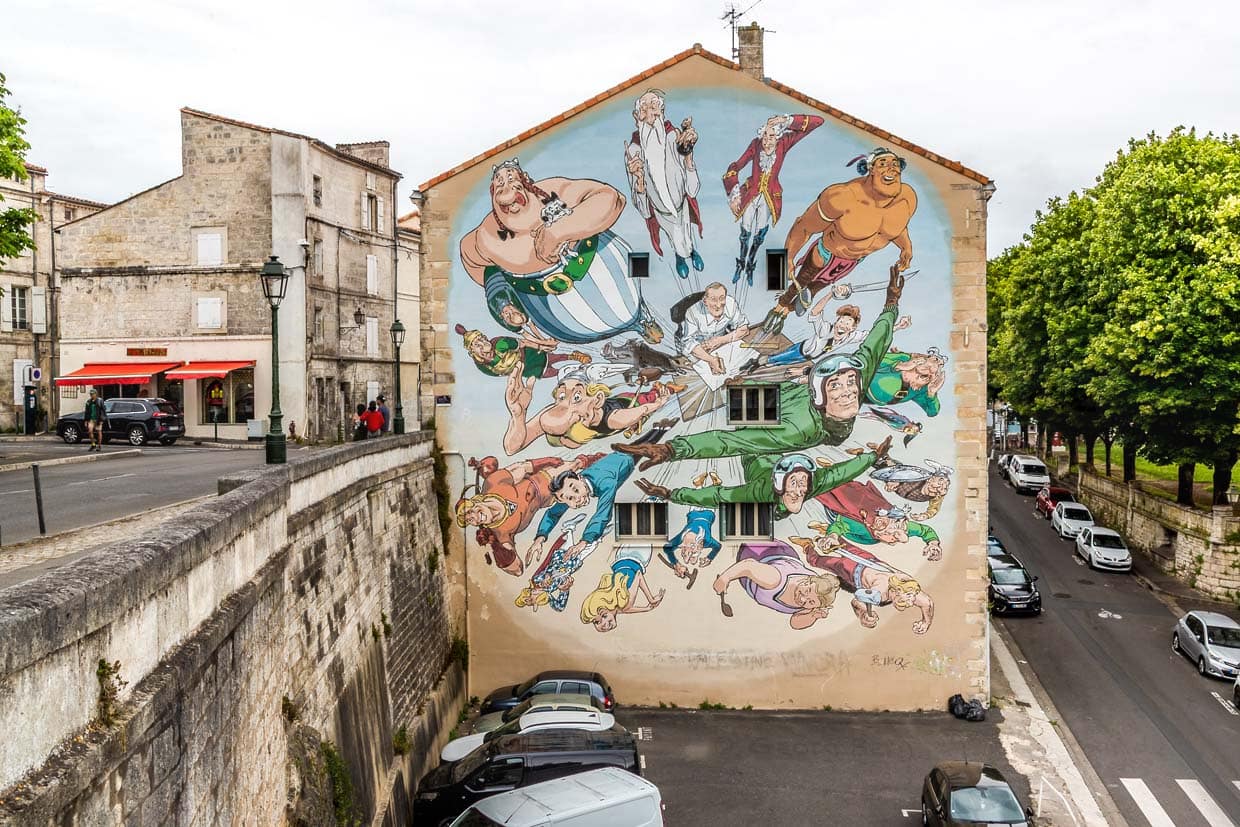
The era of murals
At the end of the 1970s, something new happened: comics left the printed pages and conquered the walls. What began with a few frescoes became a phenomenon. Angoulême wanted to be a city of comics not just during the festival, but all year round. The oldest surviving mural shows Natacha and the little Bout d’Chique – an early example of how comics went beyond their paper format and took on monumental dimensions.
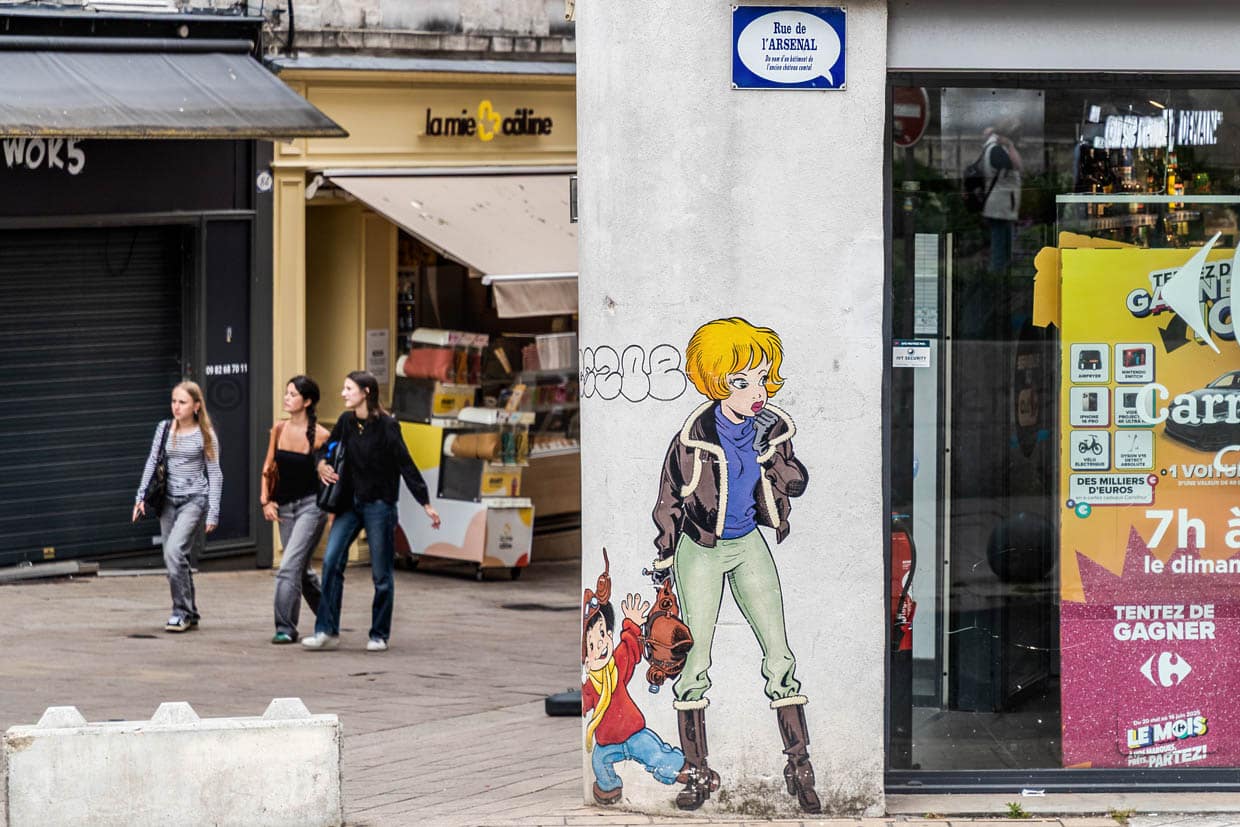
The artists and their stories
François Boucq, Yslaire, François Schuiten, Franquin, Frank Margerin, Nicolas de Crécy, TURF, ZEP, Florence Cestac, Max Cabanes and CATEL left their art on Angoulême’s walls. Rue Hergé is a pilgrimage route for fans of the Belgian master. Here stands the bust of Georges Prosper Remi, known as Hergé. Tintin and Milou may be Belgian, but Angoulême celebrates Francophone comic culture as an entity, regardless of borders.
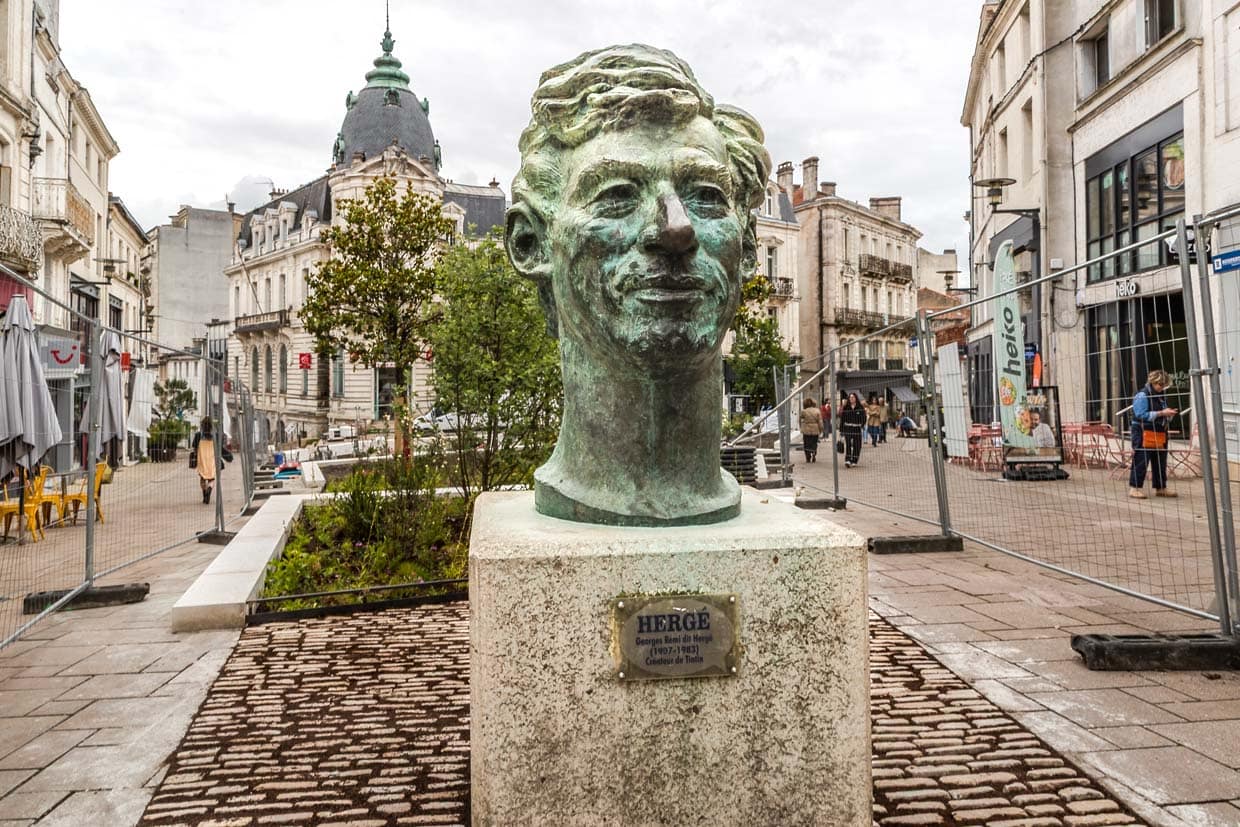
Another Belgian masterpiece can be found on Place Marengo: André Franquin’sGaston Lagaffe and Léon Prunelle. The mural shows Gaston playing his “gaffophone” – a harp that produces nothing but unbearable noises. Underneath, Prunelle explodes with rage. The vertical composition uses the architecture to depict the relationship between the chaotic subordinate and his stressed-out boss. Franquin, who lived from 1924 to 1997, was a master of visual humour. His characters – from Spirou to Marsupilami to Gaston – influenced generations.
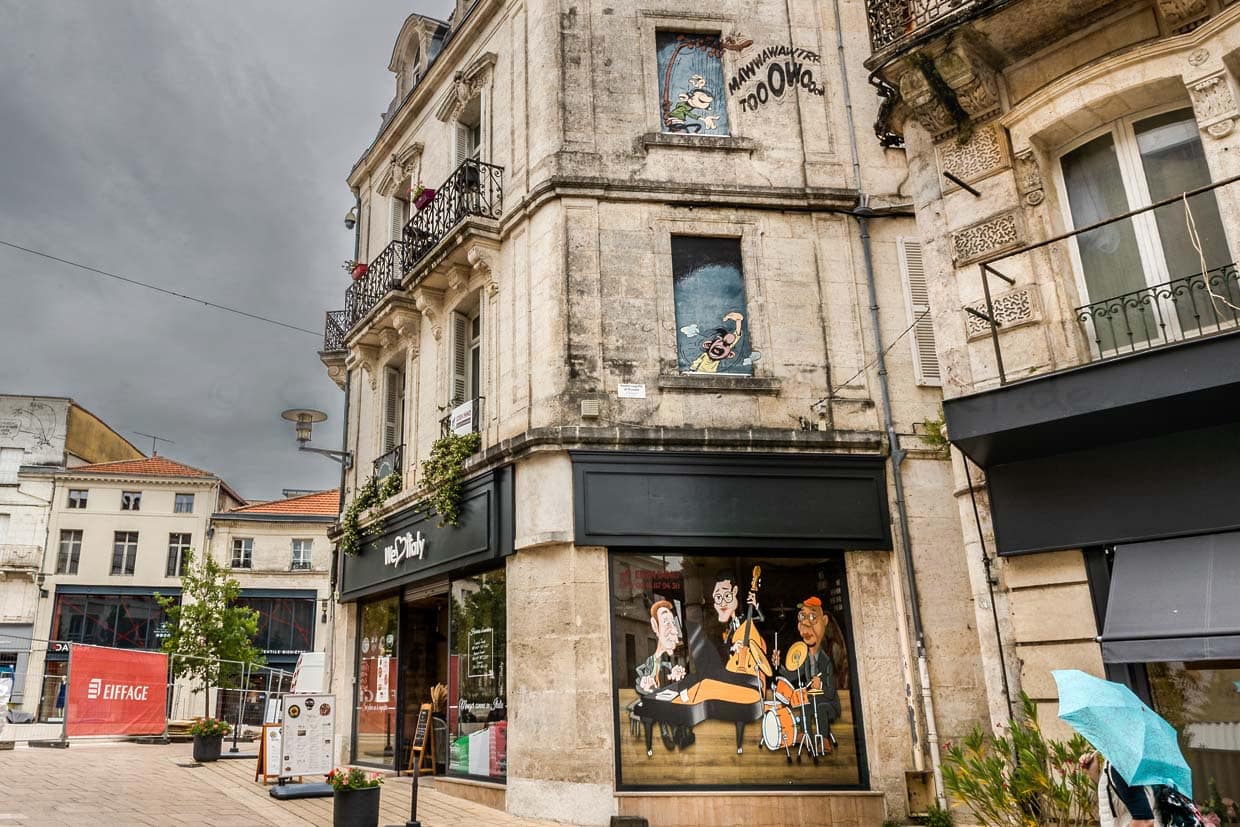
Science fiction on the ramparts
The whole variety of the Bande Dessinée unfolds on the Rempart de l’Est, the eastern city wall. Philippe Druillet, a master of science fiction comics, creates a monumental, intergalactic vision here. His work is reminiscent of George Lucas’ Star Wars and shows that comics can conquer any setting, from medieval city walls to distant galaxies. Angoulême combines everyday life and fantasy: cars circle in traffic, a historic church tower rises up – and spaceships fly through alien worlds on the facades.
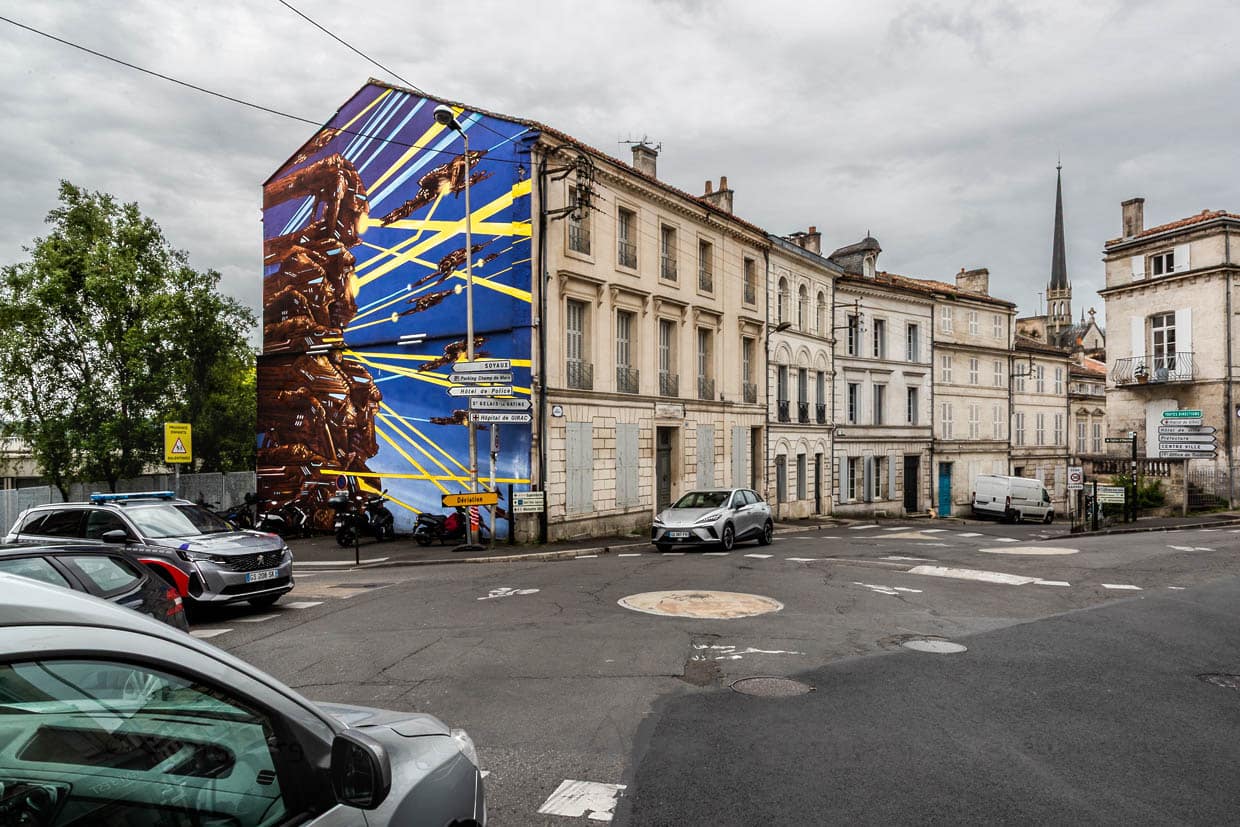
Trompe-l’œil and architectural illusions
Some murals play with the boundary between architecture and painting. They transform empty windows into inhabited rooms, let figures emerge from walls or create optical illusions. In the Rue Louis Barthou, above the Brasserie L’Esplanade, three crooks converse through windows: the Pieds Nickelés. The original series created by Louis Forton ran from 1908, initially in the classic text-under-picture format, later with speech bubbles. Ribouldingue, Filochard and Croquignol – three likeable crooks – are icons of pop culture.
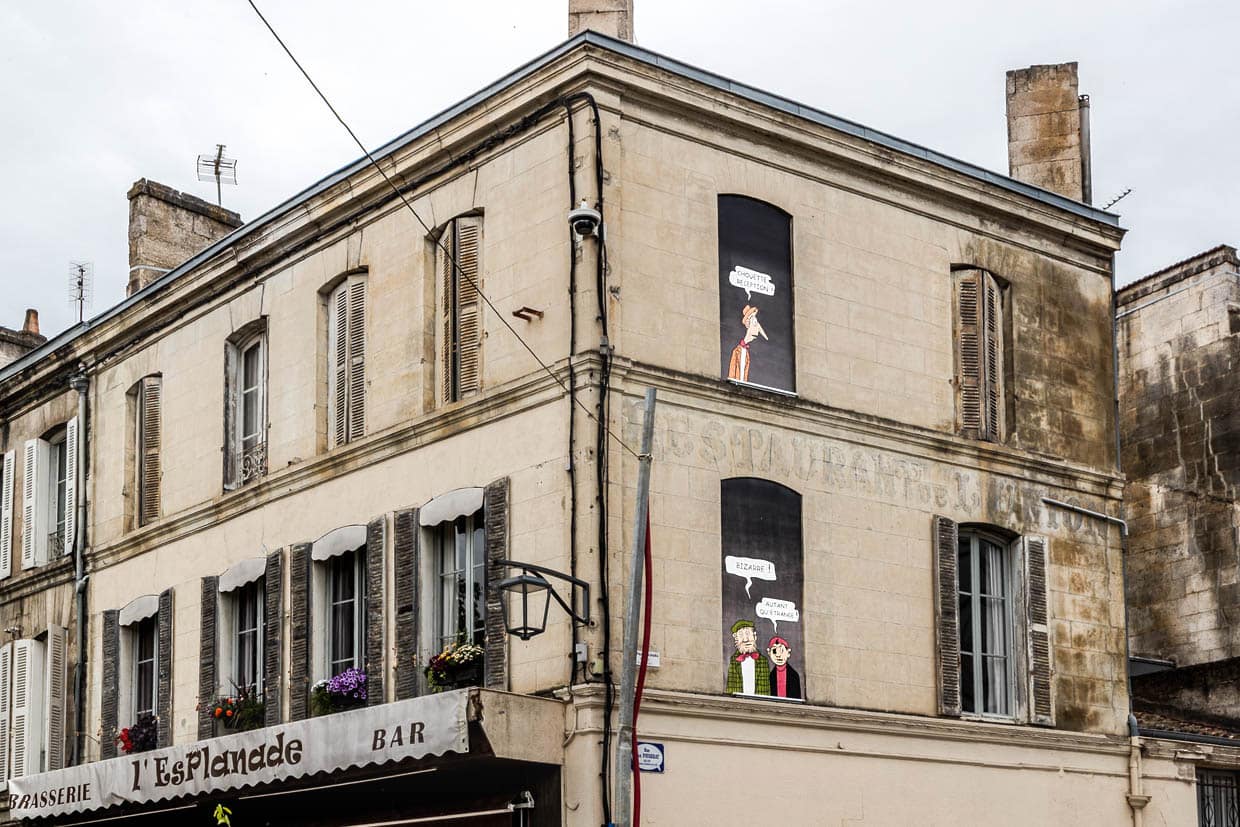
Max Cabanes‘ La fille des remparts is a masterpiece of the integration of art and architecture. A woman leans on a painted city wall that blends seamlessly into the real wall. Illusion and reality, past and present merge here.
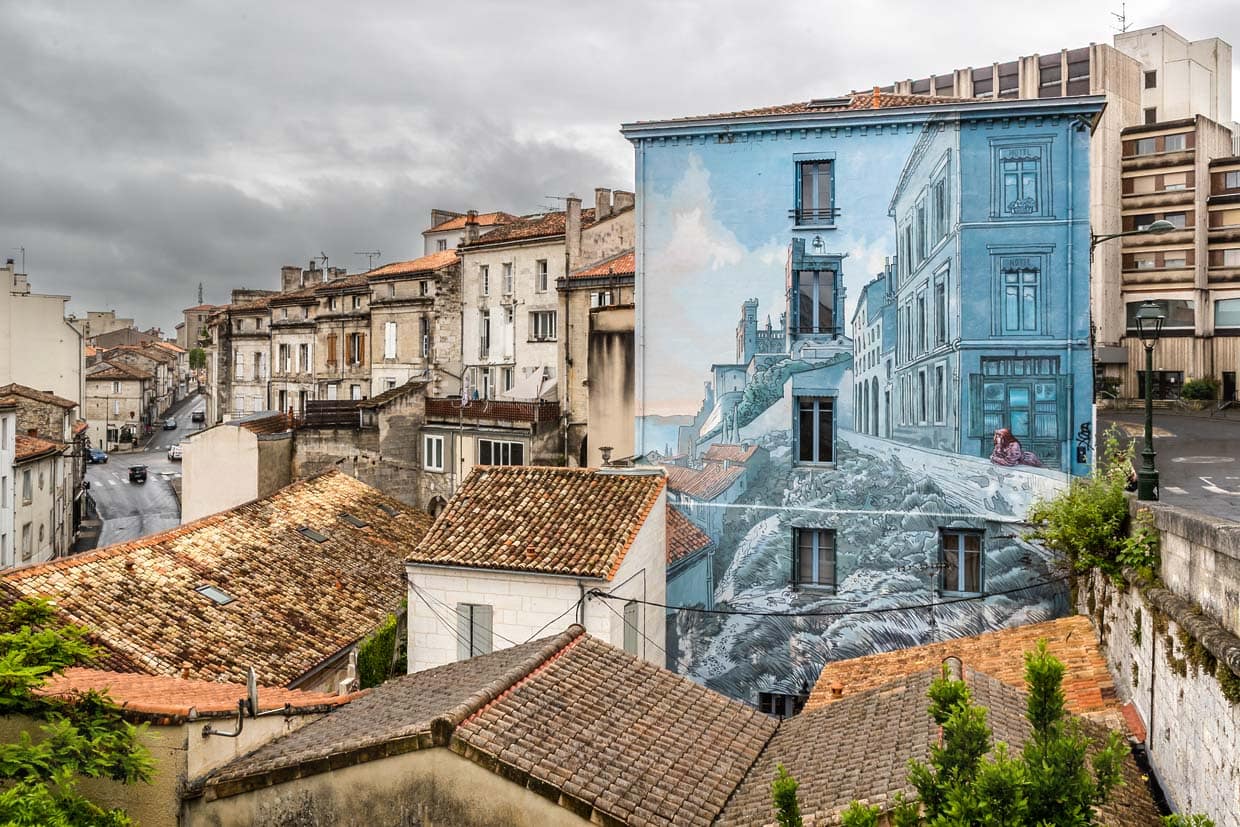
Meta-comics and philosophical questions
Marc-Antoine Mathieu’s Réalité, Sortie de Secours (Reality, Emergency Exit) is one of Angoulême’s most intellectually challenging murals. The figures literally seem to burst out of the wall, as if they were fleeing from their painted world into our reality. The speech bubbles tell a meta-fictional story: “Do you see something?” – “Yes, look. It’s exactly what I was afraid of.” – “What, another underworld?” – “Worse than that. It’s reality.”
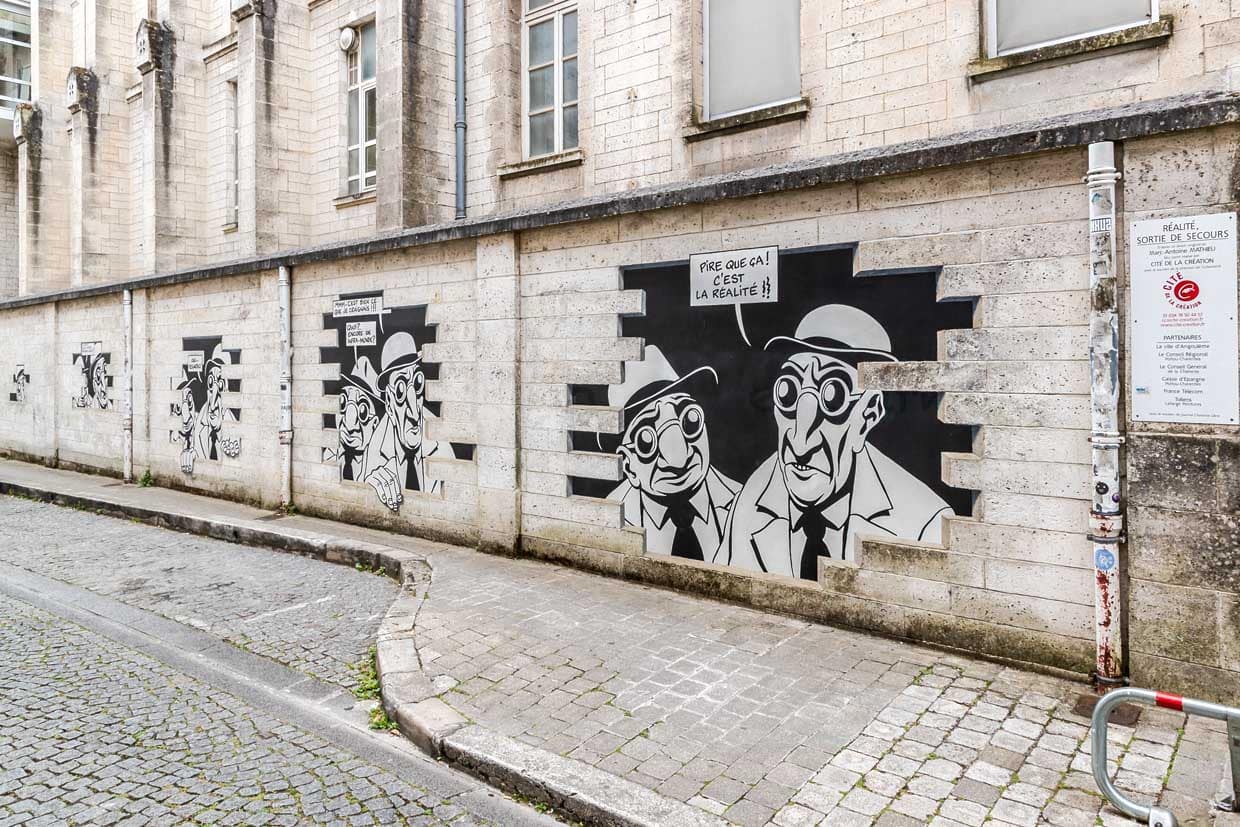
This mural is typical of Mathieu’s work, which constantly questions the boundaries between fiction and reality. His series Julius Corentin Acquefacques plays precisely with these levels. Here, the emergency exit becomes a philosophical question: what if our reality is only a drawn world for others?
Not all the murals are spectacular. Some tell quiet stories: In Rue Léonard Jarraud, we find a painting on a front door that shows a little boy stretching in vain to put a letter in the real letterbox. A simple moment that recalls the origins of the comic strip. Stories of small moments with great significance.
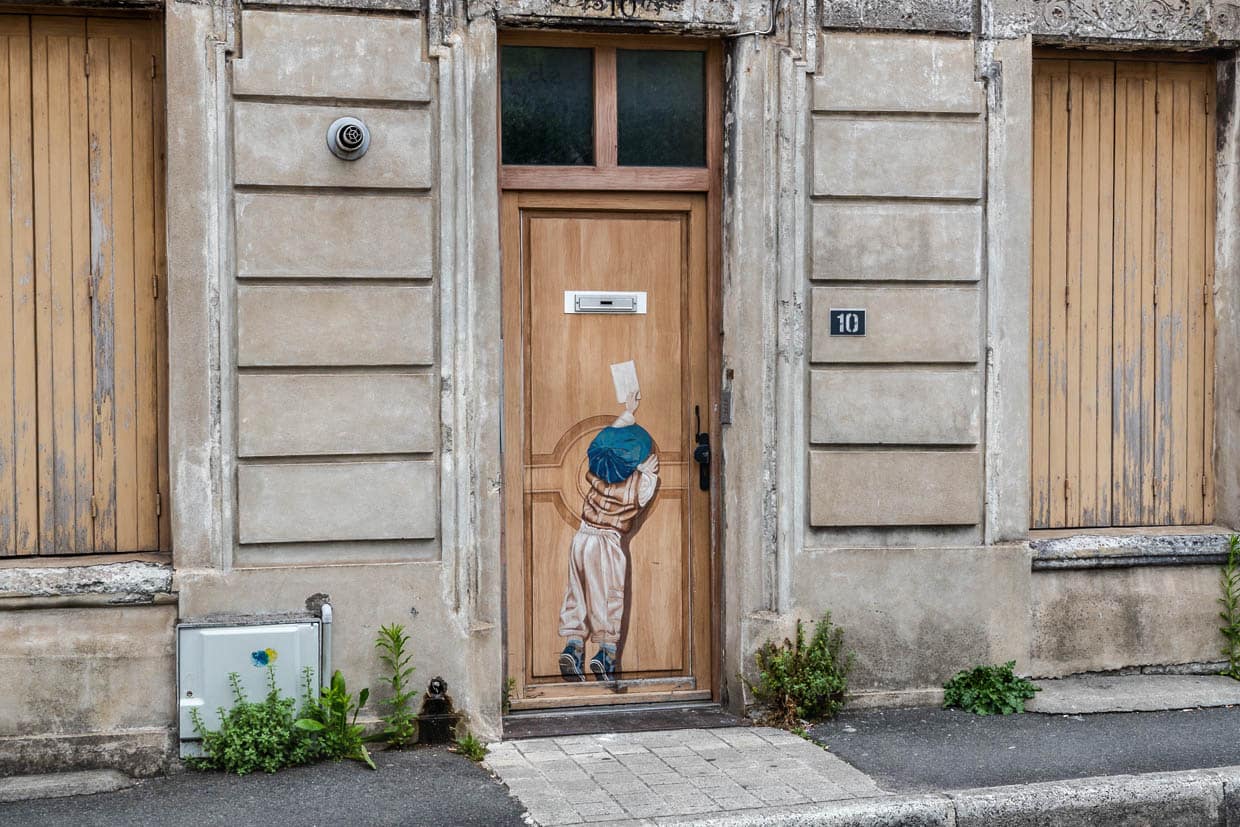
Yslaire and the shadow
The most unusual mural in Angoulême is also the most enigmatic. It invites the viewer to take a panoramic view that encompasses the entire square.
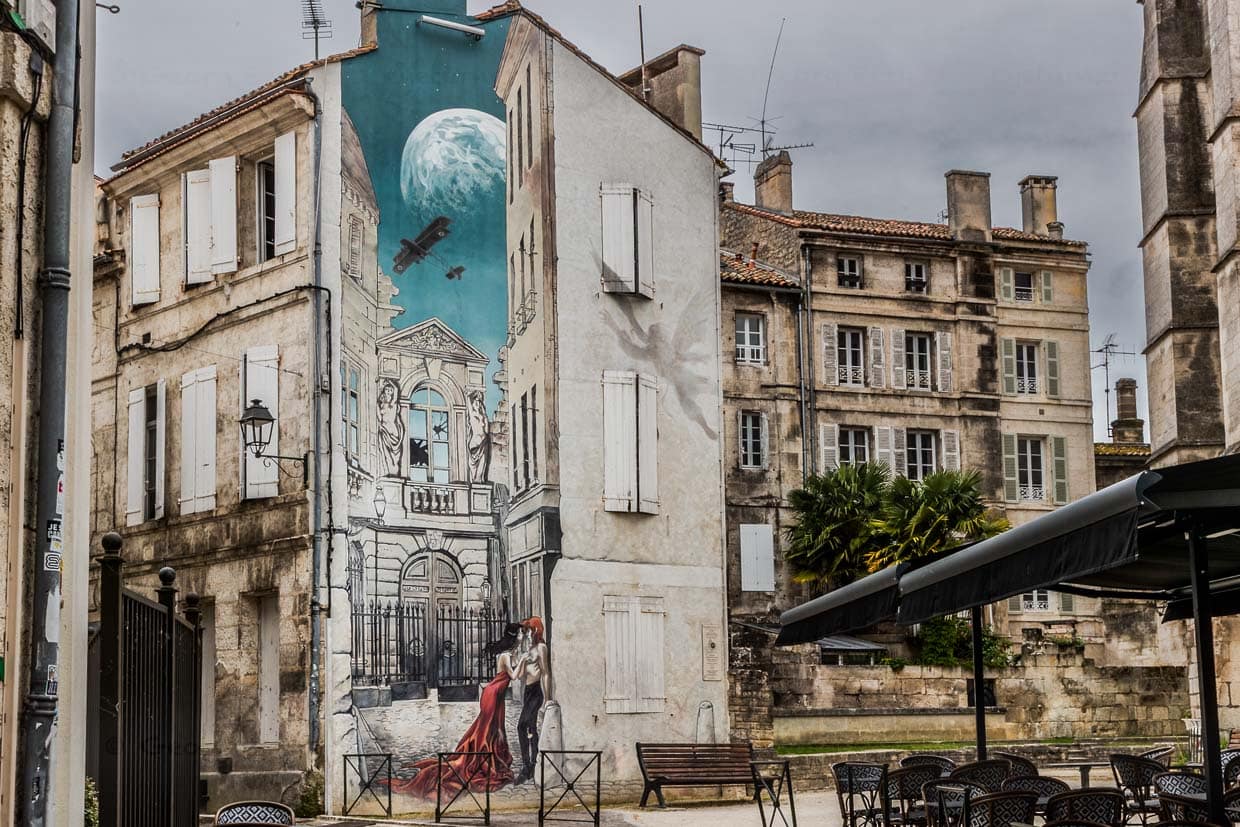
Yslaire’s Mémoires du XXe C iel (Memories of the 20th Heaven), which is considered the most romantic and tragic of all the murals, is emblazoned in the Square Saint-André. The composition shows figures in melancholy nostalgia – typical of Yslaire, who became famous with Sambre and XXe Ciel. However, the special features are only revealed on closer inspection: A shadow falls on the right-hand side of the fresco. Where does it come from? It is not part of the composition.
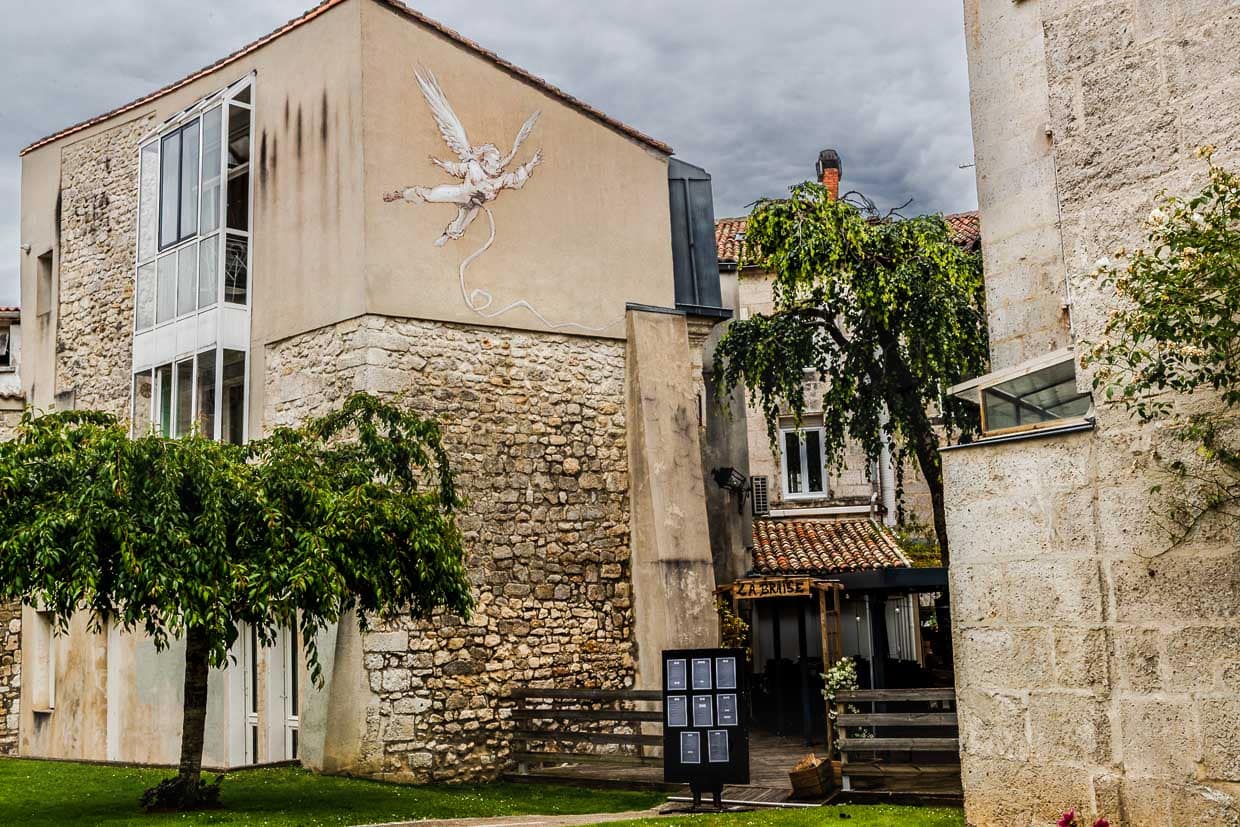
The answer lies opposite: There, a winged figure hangs from a kind of umbilical cord. It casts its shadow directly onto the main work – an artistic dialogue between two wall paintings that only unfold their full meaning together. This double composition, realised in 1999 by the artists’ association Cité Création according to Yslaire’s design, is more than just a visual game. The shadow symbolises invisible connections that interweave memories and destinies. The figure – still tied to the umbilical cord, but already with wings – symbolises the transition between bondage and freedom, between past and future. Yslaire uses a metaphor for human existence: the shadow of the past hovers over the present. What was shapes us, often unnoticed. Only when we turn around, raise our eyes and change our perspective do we recognise the whole story.
This mural demands of the viewer what the best comics demand: active participation. You have to move around, explore the space, discover the connections for yourself. Yslaire’s work is more than a picture – it is a choreography that turns the space into a stage.
From Titeuf to Baron Noir
All the murals reflect the diversity of the Bande Dessinée – from classics to socially critical comics. ZEP’s Titeuf shows a cheeky boy with a blond quiff of hair commenting on the absurdities of the adult world. A mural captures the humour of the series: Titeuf sits in an office and is asked whether he wants to be a computer scientist or a mechanic – a scene that shows the gap between a child’s perspective and adult expectations.
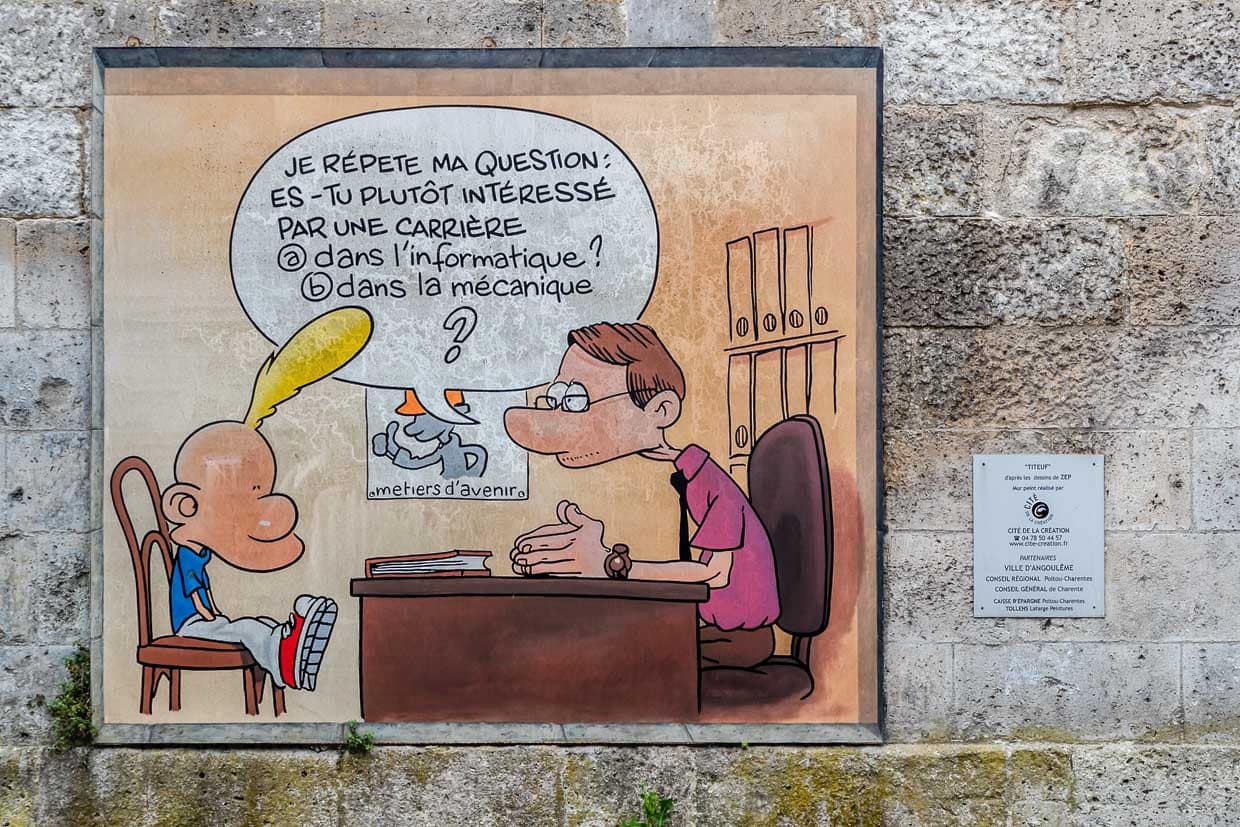
Le Baron Noir by Got and Pétillon is socially critical. A bird asks: “Aren’t you tired of running with the herd?” – a provocative message, typical of the French bande dessinée.
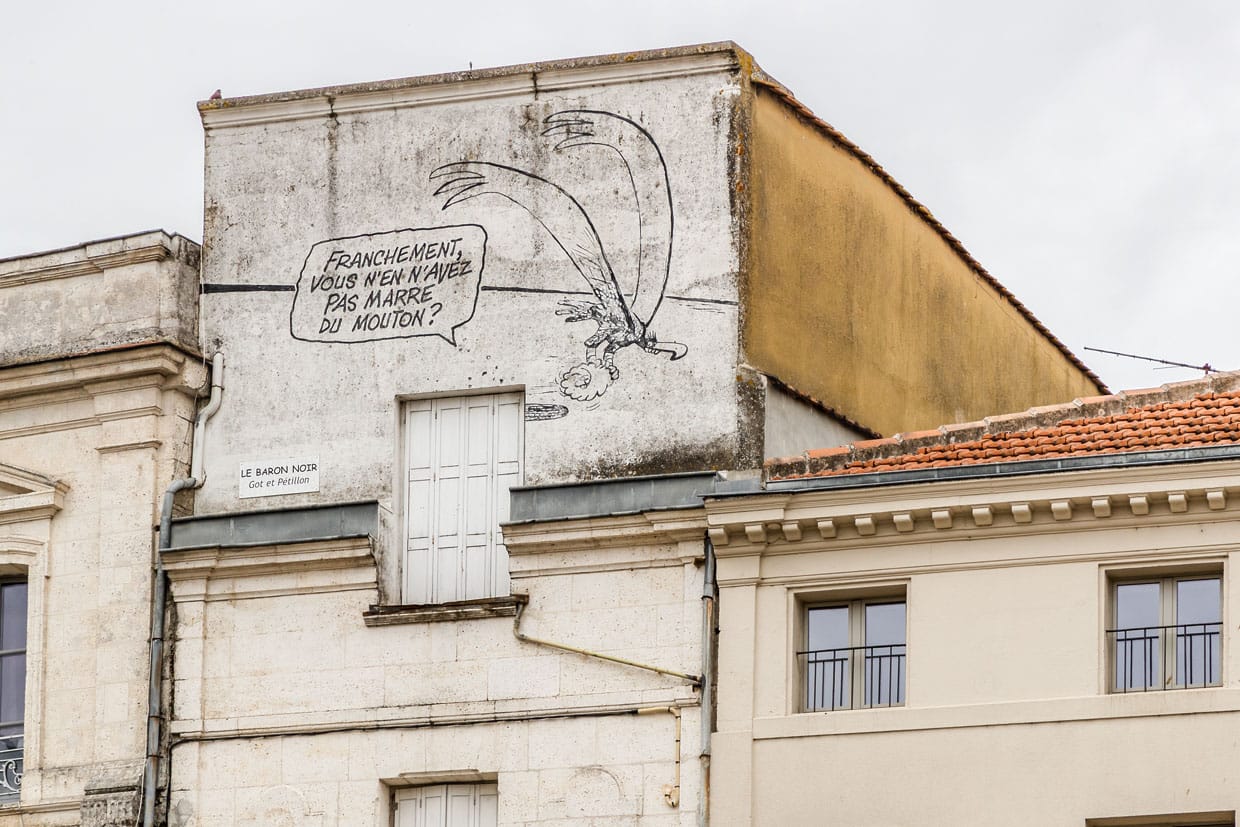
A city as a comic strip
Angoulême shows how a city itself can become a work of art. The murals are not decoration, but an expression of cultural conviction. Comics tell stories, and public space can convey identity. Culture and everyday life, art and business enrich each other here. Next to one of the oldest murals, the tattoo scene is flourishing. Comics and tattoos – both tell stories on surfaces, whether concrete or skin.
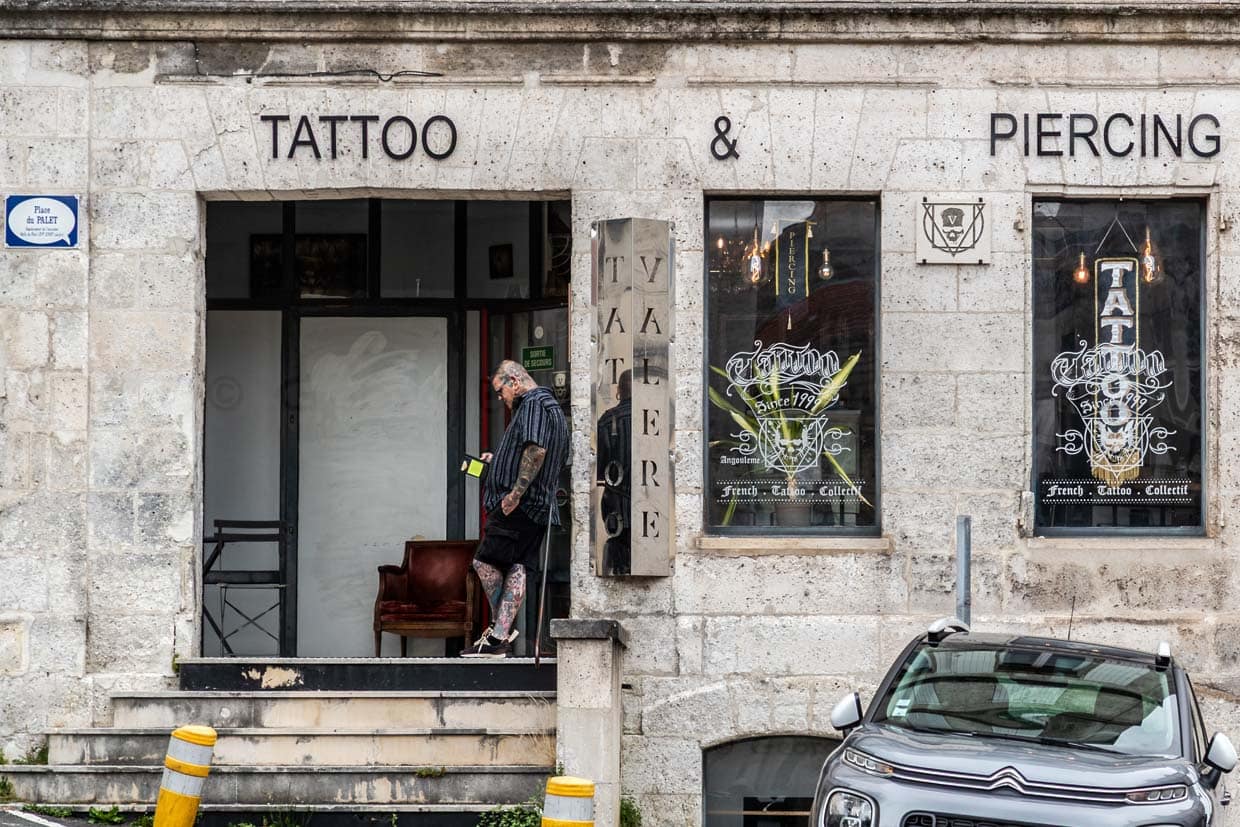
If you want to explore the murals, use the Loopi app, book a tour at the Office de Tourisme or follow a geocaching route.
Highlights in Nouvelle-Aquitaine
The Charente winds its way through the French region of Nouvelle-Aquitaine for 380 kilometres. Its course leads from the mountainous headwaters over rolling hills and vineyards to the maritime floodplains at the estuary. From Angoulême, the French capital of comics, the river is navigable all the way to the Atlantic at Rochefort. It was once the main transport route for cognac production. Today, cognac houses and winegrowers invite you to take part in spirit tourism, while cycle paths such as the Flow Vélo take you past picturesque villages, old stone bridges, a rare floating ferry, water mills, castles and the historic centre of Angoulême. The Charente is still an insider tip, as it is one of the most unspoilt river landscapes in France: hardly any mass tourism, but plenty of nature, tranquillity and enjoyment. The small island of Aix was once a bulwark to protect the Charente estuary from enemy fleets and is now a popular destination for a day trip to the sea. There is also plenty to discover in Nouvelle-Aquitaine away from the Charente. For example, some skewered plate art made us think outside the box once again. The city of Poitiers, halfway between Paris and Bordeaux, was the centre of power in the Middle Ages and offers immersive cinema at the Futuroscope leisure park. The city of Limoges is famous for its French porcelain, and a tour of the city provides an insight into the art of porcelain making. There are also great museums dedicated to the history of porcelain art . The journey continues to the Creuse and Berry region. It is the home of the writer George Sand and the cradle of tapestry in France. In A Carpet for George Sand, the two themes are linked. The Cité internationale de la Tapisserie in Aubusson shows that carpets are not the dusty art of bygone days.
The research was supported by Nouvelle-Aquitaine Tourism and Angoulême Tourisme
